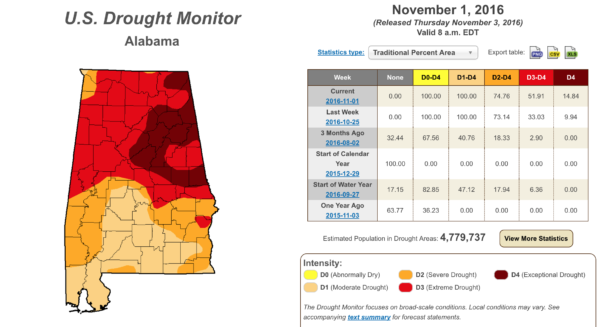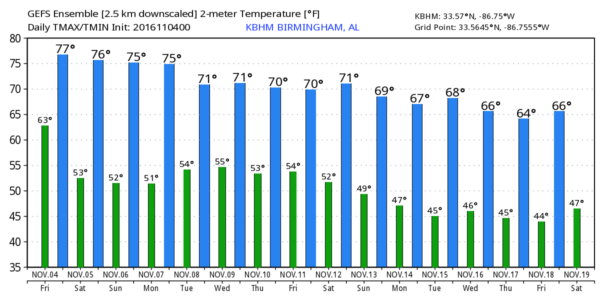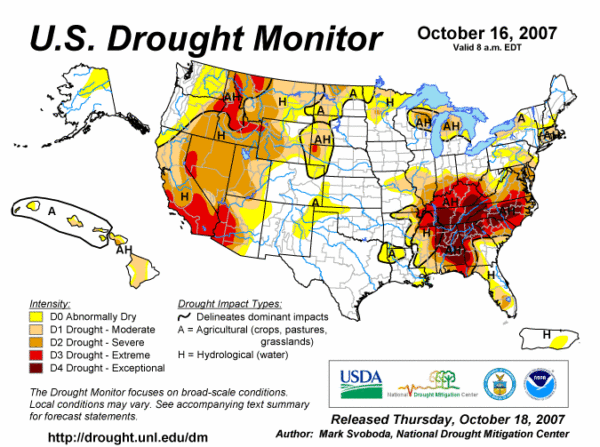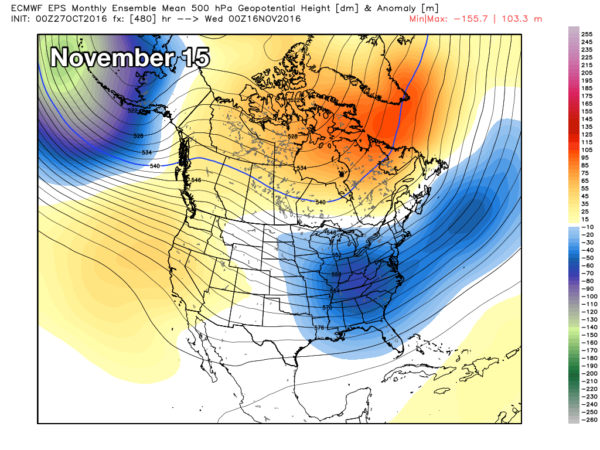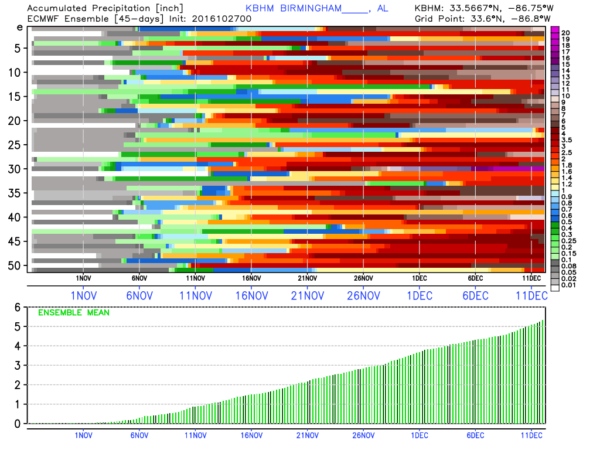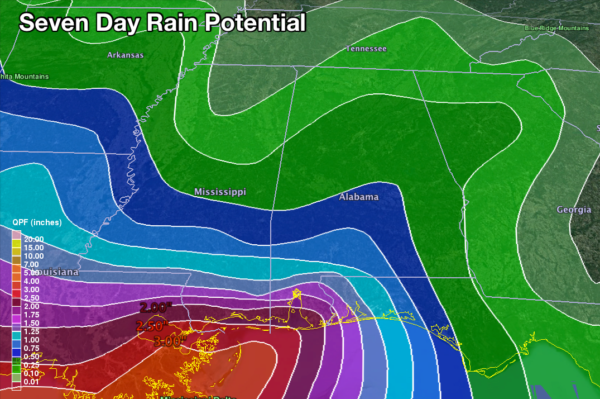Drought Update – November 4
This is an update to the post I wrote this past Sunday with updated information…
Not much good to say about a drought. Did you know there are two types? Short term droughts last for weeks and months (which we are in now), and long term, which last for several years.
Droughts have always happened, and they will always happen. Like severe storms, floods, hurricanes, and tornadoes. They are a normal component of the climate system. I have worked many short term and long term droughts in my 38 years as a broadcast meteorologist.
LACK OF RAIN: The late, great J.B. Elliott, long time National Weather Service meteorologist and my mentor, had a saying… “droughts beget droughts”. We have been under an upper ridge since summer, deflecting the major rain producing systems away… and as the soil moisture vanishes and plants and vegetation begin to die, there is less water available for evaporation from the soil surface, meaning less water available for transpiration. Basically a nasty feedback loop, meaning no moisture available for waves and boundaries that pass through. It makes it very hard to break out of these things.
Let’s review the current situation. Data below is from Birmingham-Shuttlesworth International Airport, where the “official” records are kept. Understand, your rain amounts could be different, but we use this one spot as a reference.
Birmingham’s rain total for the month of October was just a trace (that trace came on October 16); the last measurable rain was on September 18 with 0.32″. The last time we had over one inch in a 24 hour period came on July 30, when the total was 1.33″.
Showers moved through North/Central Alabama early this morning ahead of a cold front, but they missed most of the official reporting stations. Our Skywatcher in Concord had 0.02″ overnight, but there was no measurable rain at the airport.
So, we have gone, counting today, 47 consecutive days without measurable rain. The record is 52 days set in 1924, and unfortunately it looks like we have a chance of breaking this record next week.
All of Alabama is in some type of drought condition, and over half of the state is in the “severe” drought category or higher.
WARMTH: The lack of soil moisture sets the stage for very warm afternoons; the sun’s energy doesn’t have to work on evaporation, so it all goes into heating the ground, which in turn heats the air. If this were August, we would be dealing with nasty, triple digit heat. Heat waves and droughts go together like peanut butter and jelly. October was the warmest on record for most Alabama reporting stations, and Monday (November 1) was the warmest November day on record; Birmingham soared to 88 degrees.
The good news is that a cold front will bring cooler weather in coming days; no 80s expected around here anytime soon. But, because of the lack of soil moisture, afternoon highs will be in the 70s over the next few days, still above average for early November.
OUR DROUGHT HISTORY: A good analog to this drought came in 2007, when about 75 percent of the state was in an “exceptional” short term drought…
Concerning long term, Alabama has had five major droughts since record keeping began: 1929-32, 1938-45, 1950-63, 1980-82, and 1984-88.
CLIMATE CHANGE? The climate is changing. Always has, always will. Unfortunately, this subject has become politicized, and with the current deep division in our country it is hard to discuss without ideologues with no understanding of how the atmosphere works diving in. Left wingers and right wingers say things with no regard for the truth in an effort to align themselves with a political candidate. Science and politics are a very bad mix. See this essay I wrote two years ago.
Seager et al had an excellent peer reviewed paper after the 2007 drought (you can see the full paper here), and concluded “the post 2005 drought therefore appears to have been caused partly by atmosphere-ocean climate variability and partly by internal atmosphere variability, all of which is typical of what has been happening in the region for hundreds of years. The serious stress the drought put on social and agricultural systems in the region came about purely due to lack of adequate planning based on knowledge of regional climate variability.”
FYI… there is an “Alabama Drought Management Plan”… you can read it here.
WHEN DOES IT END? Will this turn into a long term drought, like 1938-45? Or, will it end like 2007 in a relatively short term fashion? Nobody can answer that, but there is hope for a pattern flip in mid-November that will bring a good chance of badly needed rain to the Deep South.
The European ensemble (ECMWF) above suggests we could see over 5 inches of rain here from mid-November through mid-December, which is also supported by climatology; November and December tend to be wet and stormy, and represents our late fall severe weather season.
And, global models are now showing a chance of rain for the state late next week, 6 to 7 days from now…
PLEASE: Let’s do all we can to conserve water, and eliminate the risk of man made wildfires. Just use common sense, and we will get through this like always. All droughts do end…
Category: Alabama's Weather

